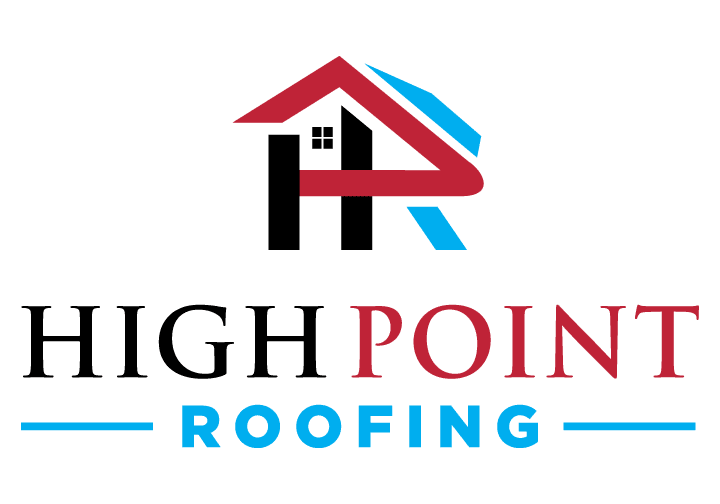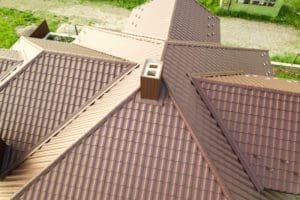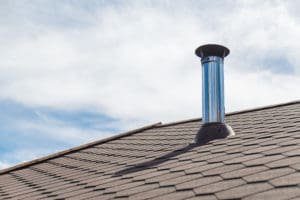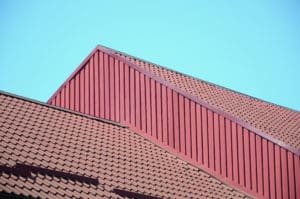Summer heat can have a significant impact on the condition and longevity of your roof. From the effects of heat on roofing materials to the consequences of sun exposure, it is crucial to understand how these factors can affect your roof’s performance and durability. In this article, we will discuss how the summer heat impacts your roof. We will explore the science behind heat and roofing materials, the implications of high temperatures on roof lifespan, and practical tips for preventing and mitigating heat damage. Additionally, we will discuss the economic implications of summer heat on your roof, including the costs of heat-related repairs and the impact on energy bills.
Understanding the Effects of Heat on Roofing Materials
Roofing materials are often exposed to extreme heat during the summer months. Understanding how heat interacts with different roofing materials is essential in evaluating their durability and performance. The science behind heat and roofing materials is complex, but comprehending its basics can help homeowners make informed decisions regarding the selection and maintenance of their roofs.
The Science Behind Heat and Roofing Materials
Heat affects various roofing materials differently. Asphalt shingles, for example, are particularly susceptible to heat-induced damage. When exposed to intense heat, they can become brittle, crack, or even curl, compromising their ability to protect your home from the elements. On the other hand, metal roofing typically expands and contracts with temperature changes, which can lead to fasteners loosening over time.
Additionally, heat can accelerate the deterioration of roofing materials due to the increased rate of chemical reactions. For instance, prolonged exposure to high temperatures can cause the breakdown of organic materials, such as wood shingles or shakes. This degradation can lead to shrinkage, warping, or even rotting, further reducing the lifespan of the roof.
Common Roofing Materials and Their Heat Resistance
Not all roofing materials are equally resistant to heat. It is crucial to choose a material that can withstand the local climate’s thermal stress and provide long-term protection for your home. Here are some examples of roofing materials and their heat resistance capabilities:
- Clay or concrete tiles: These materials have excellent heat resistance, making them suitable for regions with hot summers. Clay tiles, in particular, have been used for centuries and are known for their ability to withstand high temperatures without compromising their structural integrity.
- Metal roofing: While metal can conduct heat, it also reflects sunlight, keeping the roof and the underlying structure cooler. Additionally, metal roofs often have insulation layers that further enhance their heat resistance properties.
- Slate or stone: These natural materials provide good thermal insulation and can withstand high temperatures. Slate, in particular, is known for its fire-resistant properties, making it an excellent choice for areas prone to wildfires.
- Cool roofs: These roofs feature special coatings or materials that reflect sunlight, reducing heat absorption and minimizing heat transfer to the interior of the building. Cool roofs can significantly lower the temperature of the roof surface, reducing the strain on the roofing material and improving energy efficiency.
By choosing roofing materials with higher heat resistance, homeowners can help minimize the potential damage caused by summer heat and extend the lifespan of their roofs.
It is important to note that proper installation and regular maintenance are also crucial in maximizing the heat resistance of roofing materials. Ensuring proper ventilation, inspecting for any signs of damage or wear, and promptly addressing any issues can help preserve the integrity of the roof and enhance its ability to withstand heat-related stress.
Furthermore, homeowners can take additional measures to mitigate the effects of heat on their roofs. Installing reflective insulation in the attic can help reduce heat transfer from the roof to the living spaces below, keeping the interior cooler and reducing the strain on the roofing material. Additionally, incorporating shade-providing elements such as trees or pergolas near the roof can help create a cooler microclimate, further protecting the roofing material from excessive heat exposure.
The Impact of Sun Exposure on Your Roof

In addition to the direct effects of heat, sun exposure can also contribute to roof deterioration. Ultraviolet (UV) rays, in particular, can cause significant damage to various roofing materials over time. Understanding how UV rays affect your roof and how sunlight contributes to roof discoloration is essential for effective maintenance and protection.
Furthermore, prolonged sun exposure can weaken the structural integrity of your roof, making it more susceptible to leaks and other forms of damage. The constant bombardment of UV rays can cause roofing materials to become brittle and prone to cracking, leading to potential water infiltration during heavy rain or snowfall. Therefore, ensuring that your roof is adequately protected from the sun’s harmful rays is crucial for its long-term durability.
How UV Rays Damage Your Roof
UV rays, part of the sun’s radiation, can break down the molecular structure of certain roofing materials. This breakdown often results in the fading, discoloration, or blistering of the roof surface. Asphalt shingles are particularly vulnerable to UV damage, as the sun’s rays can cause them to deteriorate more rapidly.
In addition to surface damage, UV rays can also accelerate the aging process of your roof, causing it to deteriorate at a faster rate than expected. This can lead to premature roof failure and the need for costly repairs or replacements. Implementing preventive measures, such as applying UV-protective coatings or choosing UV-resistant roofing materials, can help mitigate the damaging effects of UV radiation on your roof.
The Role of Sunlight in Roof Discoloration
Sunlight exposure can also lead to roof discoloration, which may affect the aesthetic appeal of your home. The intensity of the sun’s rays can cause pigments in certain roofing materials to fade or change color, compromising the roof’s overall appearance. Regular cleaning and maintenance can help minimize discoloration caused by sunlight and preserve the roof’s visual appeal.
Moreover, prolonged exposure to sunlight can result in the growth of algae, moss, or lichen on your roof, further contributing to discoloration and potential damage. These organic growths not only affect the appearance of your roof but can also trap moisture and accelerate the deterioration of roofing materials. Implementing proper roof maintenance practices, such as routine cleaning and algae treatments, can help prevent the buildup of these unsightly and damaging organisms.
The Consequences of High Temperatures on Roof Lifespan

High temperatures during the summer months can have a significant impact on the lifespan of your roof. Heat-related issues, such as roof shrinkage and expansion, can compromise the structural integrity of the roof and accelerate the need for repairs or replacement.
Understanding the specific ways in which high temperatures affect your roof can help you take preventive measures to prolong its lifespan and maintain its functionality over time.
Heat-Induced Roof Shrinkage and Expansion
Roofing materials expand and contract with temperature fluctuations. This natural process can become a problem when the extent of expansion and contraction exceeds the roof’s capacity. Over time, the repeated cycles of expansion and contraction can lead to shingle or tile damage, fastener displacement, or gaps in the roof’s protective barrier. These issues not only compromise the roof’s functionality but can also contribute to the development of leaks and moisture-related problems.
Additionally, heat-induced roof shrinkage and expansion can impact the overall appearance of your roof, causing unsightly buckling or warping that detracts from your home’s curb appeal.
The Effect of Heat on Roof Longevity
The lifespan of your roof can be significantly affected by prolonged exposure to high temperatures. Materials that are subjected to extreme heat for extended periods tend to deteriorate more quickly. Therefore, it is essential to take proactive measures to minimize heat damage and extend the longevity of your roof.
Regular inspections, proper ventilation, and the use of heat-reflective roofing materials are some strategies that can help mitigate the negative effects of high temperatures on your roof. By investing in preventive maintenance and addressing heat-related issues promptly, you can ensure that your roof remains durable and reliable for years to come.
Preventing and Mitigating Heat Damage to Your Roof

Fortunately, there are several practical steps homeowners can take to prevent and mitigate heat-related damage to their roofs. By selecting heat-resistant materials and conducting regular inspections, homeowners can ensure their roofs remain in optimal condition despite the summer heat.
One additional way to protect your roof from heat damage is by ensuring proper attic ventilation. Adequate ventilation can help reduce heat buildup in the attic, which can in turn lower the temperature on the roof surface. This can prolong the lifespan of your roofing materials and prevent issues like warping or cracking due to excessive heat exposure.
Choosing Heat-Resistant Roofing Materials
Investing in heat-resistant roofing materials is an effective way to minimize the impact of high temperatures on your roof. As mentioned earlier, materials like clay or concrete tiles, metal roofing, or slate can provide better heat resistance compared to traditional asphalt shingles. Consulting with a professional roofing contractor can help you determine the best material for your specific needs and climate.
Another consideration when selecting heat-resistant roofing materials is the color of the roof. Light-colored materials tend to reflect more sunlight and heat, reducing the amount of heat absorbed by the roof. This can help lower cooling costs for your home and decrease the strain on your roof during hot weather.
The Importance of Regular Roof Inspections in Summer
Regular roof inspections during the summer months are crucial for identifying and addressing potential heat-related issues promptly. A professional roofing contractor can assess your roof’s condition, identify any signs of damage or deterioration, and recommend appropriate repairs or maintenance measures. Prompt action can help prevent small issues from escalating into larger, more costly problems.
During a roof inspection, the contractor will check for signs of heat damage such as blistering, cracking, or discoloration of the roofing materials. They will also inspect the flashing, gutters, and downspouts to ensure proper drainage and ventilation. Addressing any issues early on can help extend the life of your roof and maintain its structural integrity for years to come.
The Economic Implications of Summer Heat on Your Roof

Aside from the potential damage to your roof, summer heat can have significant economic implications. Heat-related roof repairs and the impact on energy bills can add considerable expenses to homeowners’ budgets.
The Cost of Heat-Related Roof Repairs
Repairing heat-damaged roofs can be costly, especially if the damage has progressed significantly. Repairs may involve replacing damaged shingles or tiles, addressing leaks, or reinforcing weakened sections of the roof structure. However, the economic implications of heat-related roof repairs extend beyond the immediate cost of materials and labor.
When a roof is damaged by heat, it can compromise the overall integrity of the entire house. If left unattended, heat-damaged roofs can lead to further structural issues, such as weakened support beams or even interior damage caused by leaks. These additional repairs can quickly escalate the economic impact of the initial heat-related damage.
How Heat Affects Your Energy Bills
The summer heat can also impact your energy bills. When the roof absorbs heat, it can transfer that heat to the interior of your home, making it harder for your air conditioning system to keep your home cool. Consequently, your cooling system may need to work harder and consume more energy to maintain a comfortable indoor temperature.
According to studies conducted by the U.S. Department of Energy, the energy used for cooling accounts for a significant portion of residential energy consumption during the summer months. In fact, it is estimated that for every degree increase in outdoor temperature, energy consumption for cooling can increase by up to 5%. This means that the economic implications of heat on energy bills can be substantial.
By choosing energy-efficient roofing materials and implementing proper insulation measures, homeowners can reduce their reliance on air conditioning and lower their energy consumption during the summer months. For example, installing reflective roofing materials can help reduce the amount of heat absorbed by the roof, thereby decreasing the strain on your cooling system and potentially saving you money on energy bills.
Expanding on the economic implications of summer heat on your roof, it is important to consider the long-term financial benefits of investing in heat-resistant materials and implementing energy-efficient measures. While the initial cost may be higher, the potential savings in terms of reduced repair expenses and lower energy bills can make a significant difference in your overall budget.
In conclusion, understanding how the summer heat impacts your roof is crucial for maintaining its longevity and protecting your home. By comprehending the effects of heat on different roofing materials, addressing sun exposure issues, and taking preventative measures, homeowners can mitigate the potential damage caused by high temperatures. Moreover, considering the economic implications of heat-related repairs and energy bills can help homeowners make informed decisions when choosing roofing materials and planning roof maintenance. So, don’t overlook the impact of summer heat on your roof and ensure you take the necessary steps to keep it in optimal condition for years to come.





